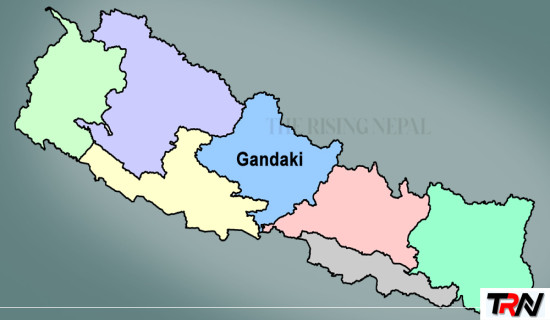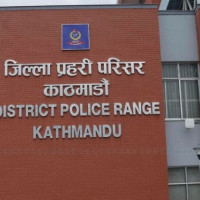- Saturday, 2 August 2025
Influence Of Buddhism In Dolakha
Dolakha was a separate state before the unification of Nepal by King Prithivi Narayan Shah. Although Dolakha was always a settlement of Hindus ruled by Hindu kings, there are temples and festivals related to Buddhism as well. It shows that Dolakha was a religiously neutral state from time immemorial, when it was a state. Perhaps Dolakha is the only place in the whole of Nepal where only Newars live within the city. The priest of Machindranath with the Bajracharya surname is the only family of the Buddhist religion living inside the town. The kings of Dolakha, including the king Indrasigh Dev, who had brought silver coins into circulation even before Mahendra Malla, the king of Kantipur, sought to make its culture more vibrant by integrating the festivals of both Hinduism and Buddhism.
Buddhist chaityas
The king Jayanarayan had installed five Buddhist chaityas, called “Seng” in the local language, inside Dolakha by bringing Bajracharya from Kantipur, which is regarded as the symbol of Buddha. The people of Dolakha, while going to pay homage to Lord Bhimeswor early in the morning, do not miss to revolve around the Chaitya and make darshan of the statues of Buddha located in four corners of the Chaitya in the Upper Tole of Dolakha. Till now, no Hindu, out of prejudice, has heard of saying, “That’s not our god.".
It is said that although Buddha did not believe in God, he used to give sermons on divine qualities like truth, love, and harmony. He was the superman among all of mankind. Hence, it is no wonder that the people of Dolakha worship the statues of Buddha despite being Hindus.
Dharma Dhatu Chaitya, located in Upper Tole, was established by the then ruler of Dolakha Jainarayan Dev, the brother of King Indrasingh Dev and his queen Bittalakshmi, in 1606 AD (Nepal Sambat 669). The statues of Buddha in different postures have been placed in the four corners of the Chaitya. The maintenance of this chaitya was made from the revenues collected in haat bazar at that time. The Buddhist chaitya of Nakchhe Tole has been built in the style of the Swayambhu of Kathmandu. According to Ratna Kazi Bajracharya, Sri Ratna Muni Bajracharya of Patan had renovated the chaityas of Kotchhe and Dungal toles. At that time, Ratna Muni Bajracharya was the Thakali of Patan's Mantra Siddhi Mahavihar. These show that at that time, the Hindu rulers of Dolakha had some inclinations towards Buddhism.
Buddhist bihar
There are two toles to the north and south of the present Dharmadhatu Chaitya located in the upper Tole: the “Thata Biharchhey” (Upper Bihar House) and the Kota Biharchhey (Lower Bihar House). Hence, historians imagine that once there were Buddhists in Bihar. However, there is no sign or remains of neither Bihar nor monks. Ratna Kazi Bajracharya mentioned in one of his articles that there is actual Bihar in those toles. He writes, "According to the brothers of Patan's Mantra Siddhi Bihar, the grandfather of Ratna Muni, Bajracharya of Sobal Bihar, Saubal of Patan, had gone to build a Bihar and live in a country called Dolakha. Bihar is a place where monks reside, take rest, practice meditation, and acquire knowledge.
It might be due to the lack of Bihar that there were no statues of Buddha in Dolakha. However, in Shyamsundar Tole, there is a stone statue of Dipankar Buddha without a temple and the date of installment. Only on October 23, 21, Dr. Sunil Maskey established Sri Padambarna Buddha Mahavihara and installed the statue of Buddha in his Tole Palchuti, Dolakha, in the memory of his deceased parents. So, now we can see the actual Buddha Bihar in Dolakha. According to the available evidence, there used to be cultural exchange between Patan and Dolakha at that time. Because the king of Dolakha Shri Ujot Deb, during his visit to Lalitpur to establish friendly relations in Nepal, Sambat 653 (B.S. 1589), had offered a golden idol of god and two large bells to Patan's Hiranyabarna Mahabihar.
Revolve around temples.
The kings of Dolakha, who developed the rich culture in Kathmandu Valley, introduced their own type of "Gulna uiri,” or revolving around the temples of Dolakha town, during the Hile Jatra festival. In Kathmandu, mainly the Buddhists revolve around the Buddhist Chaityas for one month, playing musical instruments during the Gulna festival (the Hile Jatra). However, in Dolakha, Hindus revolve around and worship all temples in the town by playing local musical instruments. These temples include the temples of Hindu deities as well as the Buddhist chaityas, or Swayambhu.
Starting from Shrawan Sukla Parewa, the separate gulna parikramaa groups of upper and lower Toles play traditional local music and revolve around almost all temples in Dolakha every morning on a regular basis. Along with a group of musicians, a priest carries a puja plate and performs puja in each temple. Thus, the practice of revolving around the temples is known as "Gulna Huya," which ends only on the day of Kage Astami. It is believed that if chaityas are revolved throughout this month, not only the dead are freed of their sins, but the country is also relieved of the disease, pandemic, and sufferings.
Obviously, Gulna Huya customs in Dolakha are different from those in Kathmandu. Traditionally, in Kathmandu, only Buddhist Newars revolve around Buddhist Chaityas. However, only Hindu Newars revolve around both Buddhist stupas and Hindu temples in Dolakha without any prejudice. This shows that the Newars of Dolakha were more liberal than those of the Kathmandu Valley.
Manjushree temple
On the hill of Dolakha called Tilincho, there is a small temple of Manjushree, specially worshipped by Buddhists, in which is a stone idol of Saraswati with four hands. Locals worship the statue, known as Manneswari, as the goddess Saraswati. There are two eyes inscribed in the paduka of Manjushree in front of the idol, as in the Manjushree temple of Kathmandu behind Swayambhu. On the day of Sripanchami, a great crowd of people from Dolakha, both Buddhist and Hindu, gather at that temple to worship the goddess of education and enjoy a picnic. According to a Buddhist myth, Boddhisatwa Manjushree of Mahachin cut off Chobhar and let outflow the water of Kathmandu, which was in the form of a lake.
Panchadan festival
Dolakha also celebrates the Panchadan festival, also known as "Banda Jatra," which is observed annually on the day of Bhadrakrishna Trayodashi in the valley by Buddhist Newars such as Shakya, Bajracharya, and Buddhacharya. The Buddhist devotees set aside a portion of their income and donated it to the Panchadan festival as per the teachings of the Buddha. The Buddhist children as well as the elderly go around and receive panchadan alms in different forms.
In Dolakha, “Panchadan” is given to the Bajracharyas who go around the town playing musical instruments during the festival called "Pangja." Besides giving donations, food is also served to them. The tradition of giving alms and feasting in Banda Jatra dates back to the year 1857 B.S. But there is a slight difference between Valley and Dolakha from the perspective of the festival participants. In the Kathmandu valley, both those who receive and give donations are basically Buddhists. However, in Dolakha, Buddhist Bajracharyas take alms, and Hindu Newars give alms. It might be because there is only one Buddhist family in Dolakha.
The festival begins on the day of Bhadrakrishna Trayodasi, and Panchdan is given in every Tole and chaitya for three days. Although there are only one or two Buddhist Bajracharya families in Dolakha, the “Baada Jaatra” is celebrated here. This clearly indicates that the rulers of Dolakha also used to give equal respect to the customs and traditions of the Buddhists.
Rato Machhindranath
The festival of red Machhindranath, the god of rain, is celebrated only in Dolakha town, outside Kathmandu Valley. It is believed that Machhindranath was installed in Bungamati, Patan, in 632 B.S. to make rainfall to get relief from a long drought. A Bajracharya of Patan brought the same red Machhindranath to Dolakha from Bungamati in 1575 B.S. The idol was then installed in a newly built temple in Dwakulunga Tole. Since at that time Dolakha was a prosperous state, traders from Patan and Bhaktapur used to live in Dolakha for business purposes. As Machhindranath was brought from Bungamati, it is called “Bugdeu” in Dolakha, as in Patan, where “Deu” means god in Dolakha.
The chariot festival of Machhindranath takes place nine days starting from Baisakh Purnima. The chariot is pulled around Dolakha town during the festival. The chariot pull starts and ends at the Pingal Tole after passing through five other important Toles. When the chariot procession starts, thousands of people assemble to observe and worship the god and enjoy pulling the chariot down a seemingly difficult, narrow, and steep hill road.
Since the priest of Machhindranath is Gubhaju, the festival looks like the festival of Buddhists. However, in Dolakha, this festival is celebrated with great enthusiasm by the general public, mostly Hindus.
On the 9th day, when the idol is brought back to the temple in Dwakulunga Tole, Gubhaju, the priest of the temple, worships the god in the courtyard. Then, before taking the god inside the temple, the Gubhaju resides in a sloka, loudly praying to the god to relieve the people and country, including the king, from suffering, and takes the god inside, which ends the festival. It seems that since the temple was established by the Gubhaju of Patan, the sloka is recited in “Nepal Bhasha,” or Newari language.
Stone taps
Dolakha has a famous stone tap called Raiti, with three stone taps in a row. Raiti was the lifeline of the residents of Dolakha town until 2019 B.S. In other words, it was the main source of water for all residents until the piped taps were introduced in 2019 B.S. Raiti has a statue of Pashupati in one corner, a statue of Buddha in the middle, and a statue of Vishnu in the other corner of the taps. This also reflects that both the king and the people of Dolakha had liberal religious sentiments at that time.
It is obvious that Buddhism has been widely propagated and followed in Dolakha since very early times. Although the rulers of Dolakha were Hindus, they used to have equal faith in Buddhism. As mentioned in “The Historical Outline of Dolakha,” it seems that Buddhism has been more popular since the time of Indrasingh Dev, the first ruler of Dolakha (1591 B.S.), who was called "Rajadhiraj." There was a feeling of religious coordination in Dolakha even at that time. Evidence found so far indicates that as the business of Dolakha as an independent state with Bhot (Tibet) was thriving, it led to the rapid spread of Buddhism.
(The author is a professor of business economics.)















